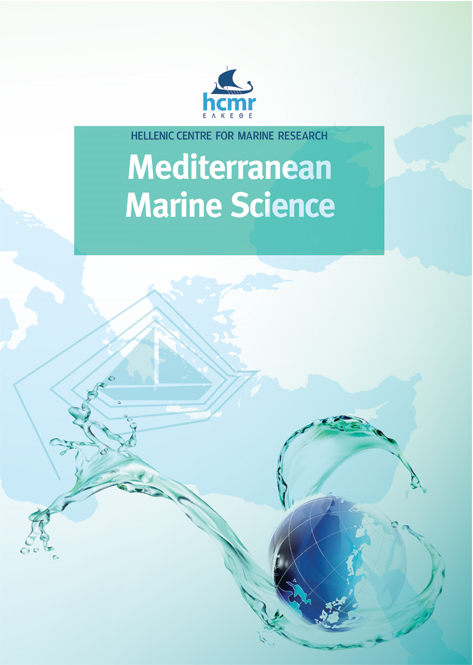Assessment of the impact of Atlantic bluefin tuna farming on Adriatic benthic habitats by analysing macroinvertebrate assemblage structure at family level

Abstract
The rapidly expanding Atlantic bluefin tuna fattening industry is characterized by high stock densities and a high input food biomass in the form of whole bait seafood. The environmental impact of this activity must be effectively monitored within a proper sustainable development framework, to address concerns about the potential adverse effects. However, evaluation of monitoring tools for tuna farming has received less attention than other activities. Based on the principles of key taxa (Pocklington & Wells, 1992), we tested the potential use of changes in benthic macroinvertebrate assemblages, polychaetes and amphipods for this purpose. Applying a non-parametric multivariate approach for monitoring the impact of this aquaculture activity on the benthic habitat, we checked for correlations with the physicochemical environmental variables of the sediment. A hierarchical spatial design was followed, using multiple controls. Amphipods and polychaetes showed dissimilarities between impacted and control locations, with significant differences for total assemblage structure at a taxonomic level of families. Total nitrogen (TN) and total sulfur (TS) concentrations were the variables best associated with these changes for amphipods, and d 13C and total phosphorus (TP) were the best for polychaetes. However, total free sulfides (TFS) and TP were the chemical variables that best indicated the effects on sediment. Using this approach, surrogating the whole benthic assemblage to a single taxocene, our data suggest that monitoring tuna farming impact by comparing the changes in amphipod and polychaete assemblages at family level could be an optimal procedure with an excellent cost/benefit ratio.
Article Details
- How to Cite
-
SANCHEZ-JEREZ, P., FERNANDEZ-GONZALEZ, V., MLADINEO, I., MATIJEVIĆ S., BOGNER, D., GRUBIŠIĆ, L., & FERNANDEZ-JOVER, D. (2018). Assessment of the impact of Atlantic bluefin tuna farming on Adriatic benthic habitats by analysing macroinvertebrate assemblage structure at family level. Mediterranean Marine Science, 19(2), 344–355. https://doi.org/10.12681/mms.2133
- Issue
- Vol. 19 No. 2 (2018)
- Section
- Research Article
Authors who publish with this journal agree to the following terms:
- Authors retain copyright and grant the journal right of first publication with the work simultaneously licensed under a Creative Commons Attribution Non-Commercial License that allows others to share the work with an acknowledgement of the work's authorship and initial publication in this journal.
- Authors are able to enter into separate, additional contractual arrangements for the non-exclusive distribution of the journal's published version of the work (e.g. post it to an institutional repository or publish it in a book), with an acknowledgement of its initial publication in this journal.
- Authors are permitted and encouraged to post their work online (preferably in institutional repositories or on their website) prior to and during the submission process, as it can lead to productive exchanges, as well as earlier and greater citation of published work (See The Effect of Open Access).








